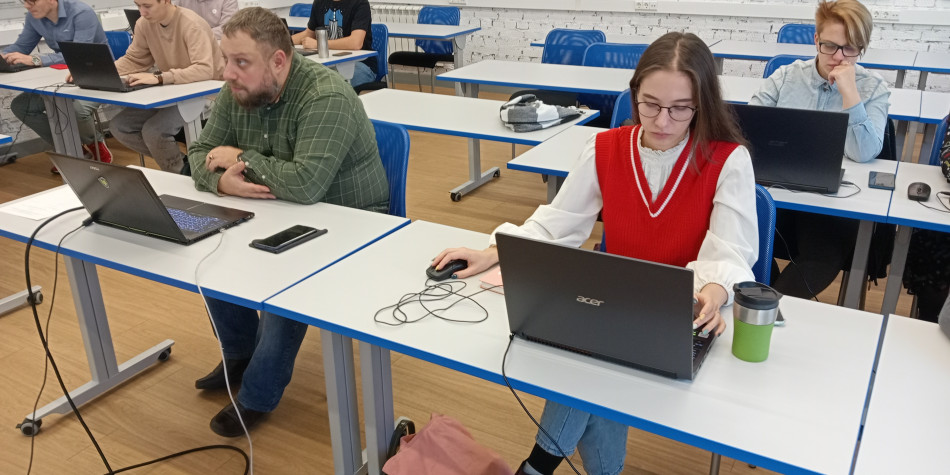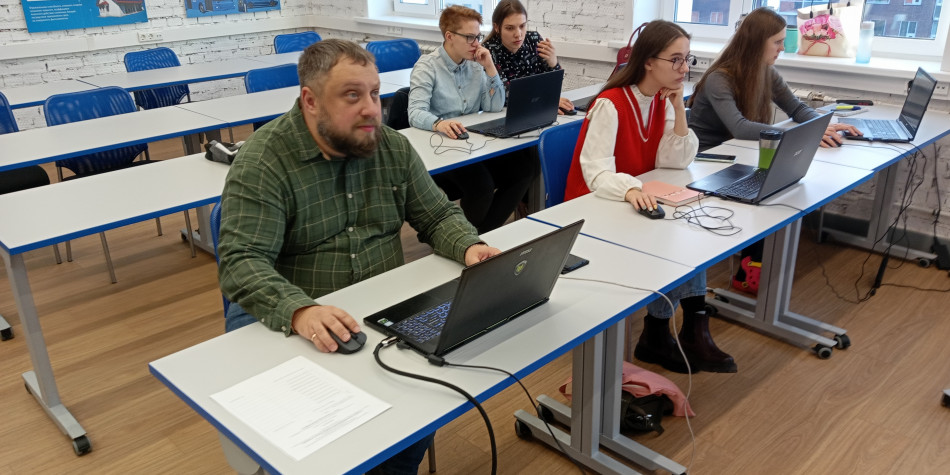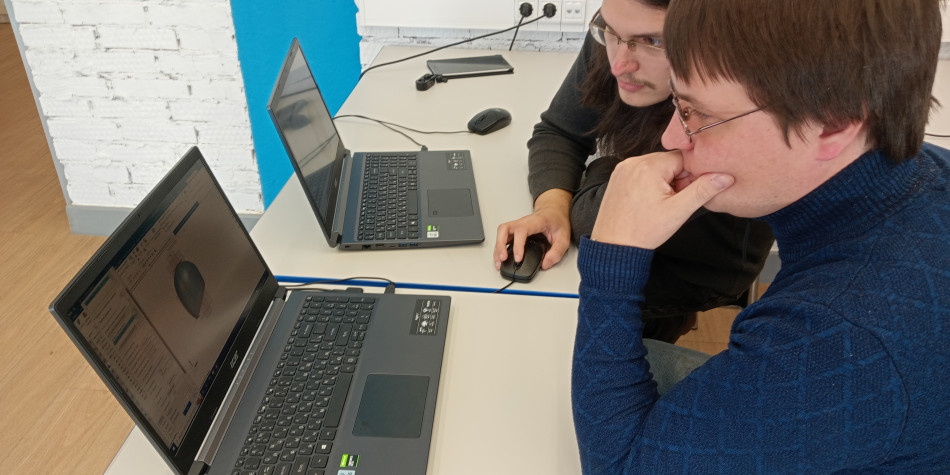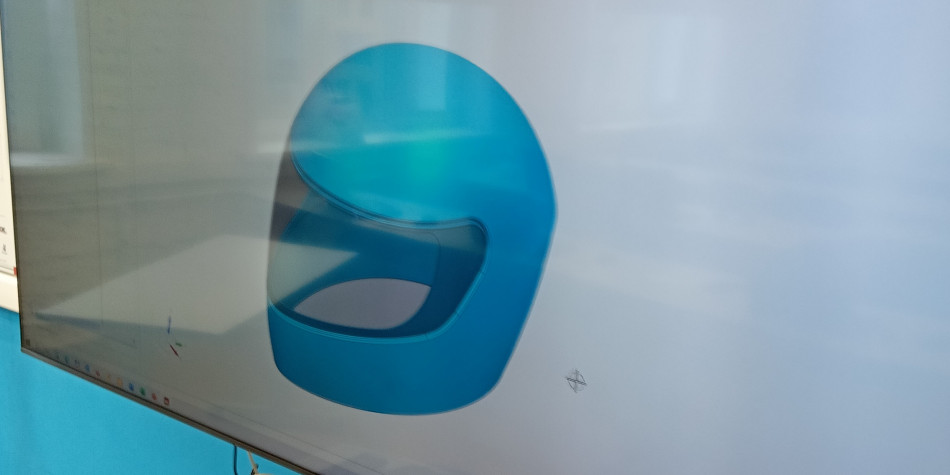
The educational programs of the competence development center of the REC "Russian Arctic" are connected with technological projects of industrial partners. This time the training was divided into three parts. And although the audience was prepared, each of the students, at least, had a basic institute training in mathematical modeling, the first course was devoted
to getting acquainted with the NX program, with its main features and tools.
The second part, the creation of complex curved surfaces by different methods, as well as their editing, was closely related to the practical task of modeling a helmet, which everyone performed individually.
The final third course is reverse engineering itself.
- We were provided with some models for the sample - more complex applied things, similar to those that will need to be done in production. We work on them," said Maxim Nekhoroshev, a teacher, consultant on CAD solutions of the Connective PLM company. - It is already impossible to imagine modern industrial development without 3D modeling.
It is more convenient and practical to create new equipment first, as a digital layout on which you can immediately evaluate everything – both the assembly process and the operation of this product.
Making a digital 3D double in the program is logically easier and cheaper than in metal. By applying kinematic connections directly in the computer, you can see how the entire device will work.
Even at the design stage, something needs to be changed and improved. - We are familiar with the NX program and are already working in it, - said Elena Zemtsovskaya, design engineer of the center for propulsive systems of the Zvezdochka CA. - When designing, we initially
we are going from a digital 3D model of our product. These are propulsion and steering systems, speakers, thrusters, water cannons. I know from my own experience that it is almost impossible to create such complex surfaces in other programs. You can only do NX. Therefore, this training is very important to us. It is difficult to find such knowledge on the settings of all parameters that Maxim Vladimirovich gave.
- This is a new program for me. Previously, I worked at either Blender or Compass," Evgeny Sergeevich Khaimin, senior lecturer at the Department of Information Systems and Information Security at SAFU, shared his impressions. - The courses are very serious, they reveal the great capabilities of the system. We learned how you can do many things in different ways,
while achieving better results when optimizing or creating models.
The development of 3D printing of complex industrial products, including in metal, is a time requirement. Especially considering the current geopolitical situation.
- Additive manufacturing when creating some complex structures is very relevant now, - Maxim Nekhoroshev emphasized. - Foreign equipment, which sooner or later will start to fail, will need to be repaired. With the existing sanctions, we will have to deal with this closely. With the help of metal powder, you can print a part of any
complexity. But you can't do without mathematical models here.
When creating a 3D model, working design documentation is developed - a package of drawings and information about which alloys the part consists of, which metal is used, what anti-corrosion characteristics and properties of this material and the part should be.
- Our PINDUSTRIAL partner of the REC "Russian Arctic" - the center for propulsive systems of the CS "Zvezdochka" a few years ago purchased equipment for 3D printing of metal for the production of complex parts from the St. Petersburg Maritime Technical University, - the head of the expert and analytical department of the REC "Russian Arctic" Dilmurad Yakhyaev continued the topic. –
The company works with the printing of elements of complex structures, primarily screws. Simple ones - it's easier to cast, but, for example, to make a part of a wriggling cooling system like this – it just won't work.
– The courses were selected in such a way as to improve the qualifications of the staff of the SAFU and the Asterisk for further work in this direction, - summed up the head of the expert and analytical department of the REC "Russian Arctic" Dilmurad Yakhyaev. - Our colleagues – the university team of IT specialists and materials scientists under the leadership of Alexey Prokhorov, within the framework of the international project Kolarctic last year carried out work in the direction of additive technologies. We combined two industrial directions and we got a single one
- "Additive technologies in shipbuilding and ship repair". At the next stage, we plan to purchase similar software from SAFU in order to create unique models. This is import substitution. The project itself is our further development. Based on the prototype of the engineering development center, new competencies are emerging for teachers, which they will transfer to students.





